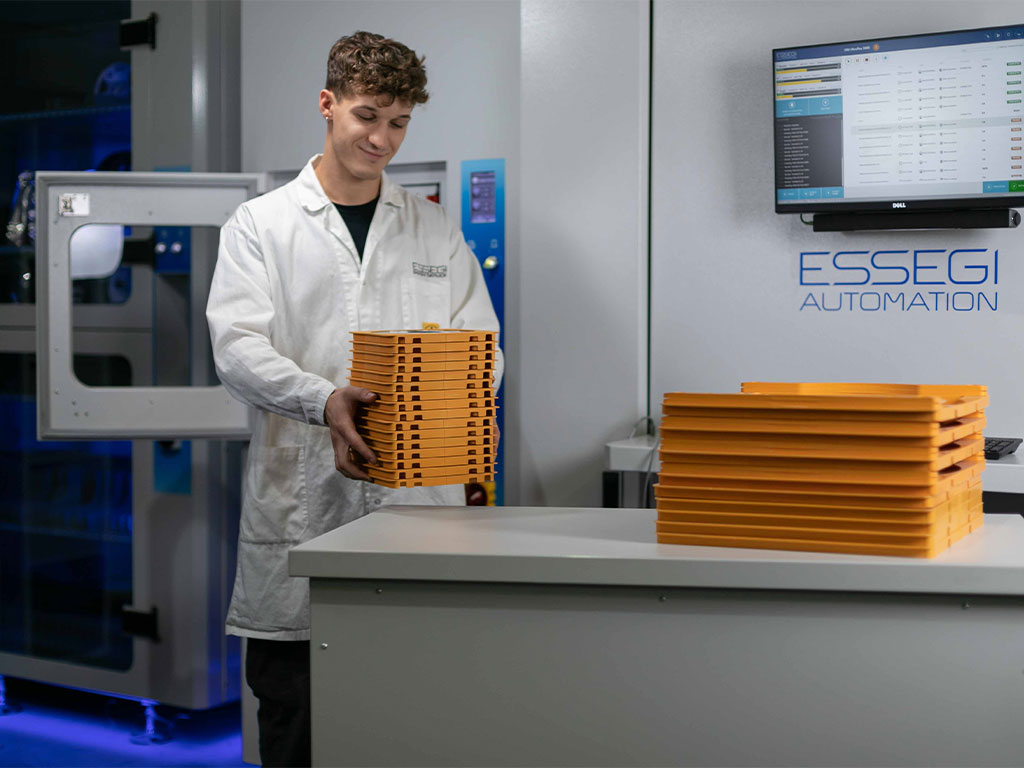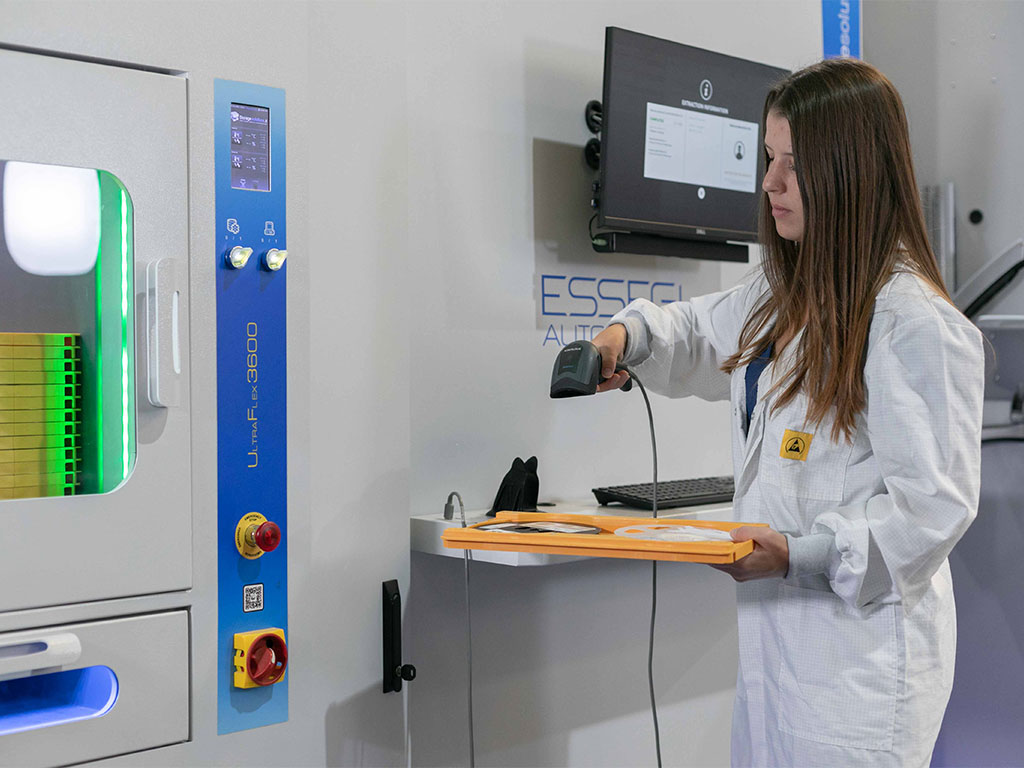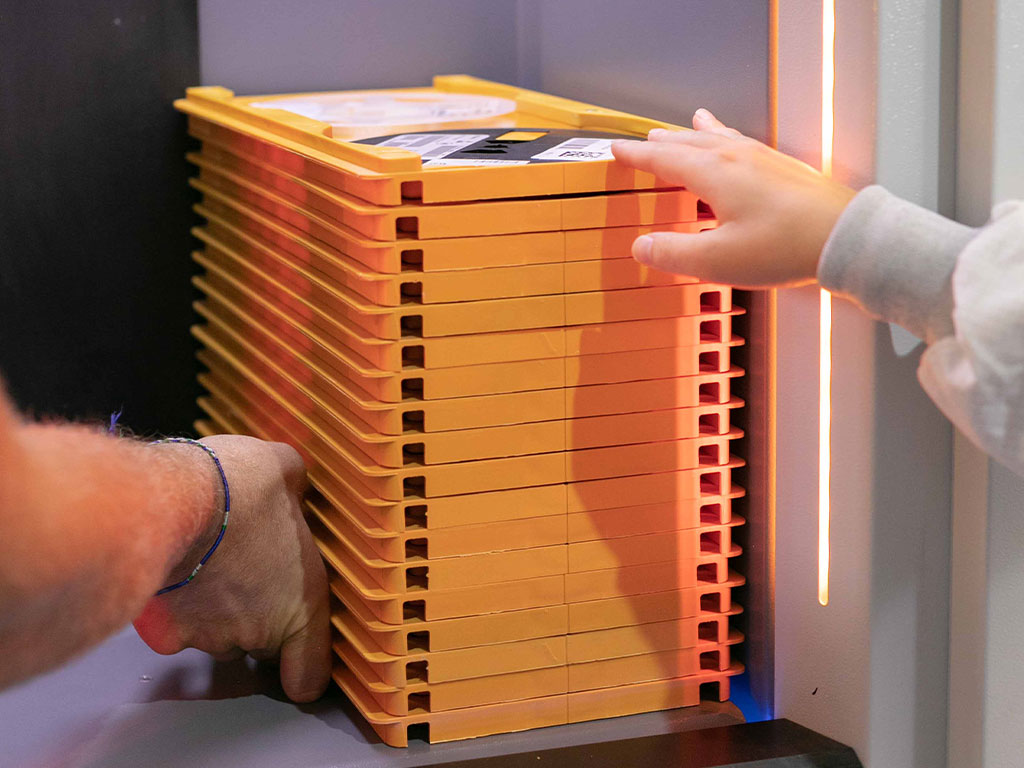ESSEGI AUTOMATION has warehouses in its blood, or rather in its payoff, which states: focus on storage solutions.
If we were to answer Simon Sinek’s question, Start with why, it would have no doubts about why it has been active for almost 20 years in the electronics market: to develop intelligent storage and logistics systems for components to make the production process more efficient in assembly companies. ‘Only’ this is its purpose, meaning that its business is exactly this, and all ESSEGI AUTOMATION personnel, throughout the year, every day, is dedicated to the development of patented automated, modular, integrated, and scalable storage systems. What is better than a specialist to solve a problem?
Let’s frame the problem
Typically, the problem for electronic assembly companies is to combat inefficiencies in the production system that arise from a series of known and recurring circumstances originating in the management of storage and movement of components, inevitably resulting in production line stops.
The importance of ESSEGI AUTOMATION’s origins
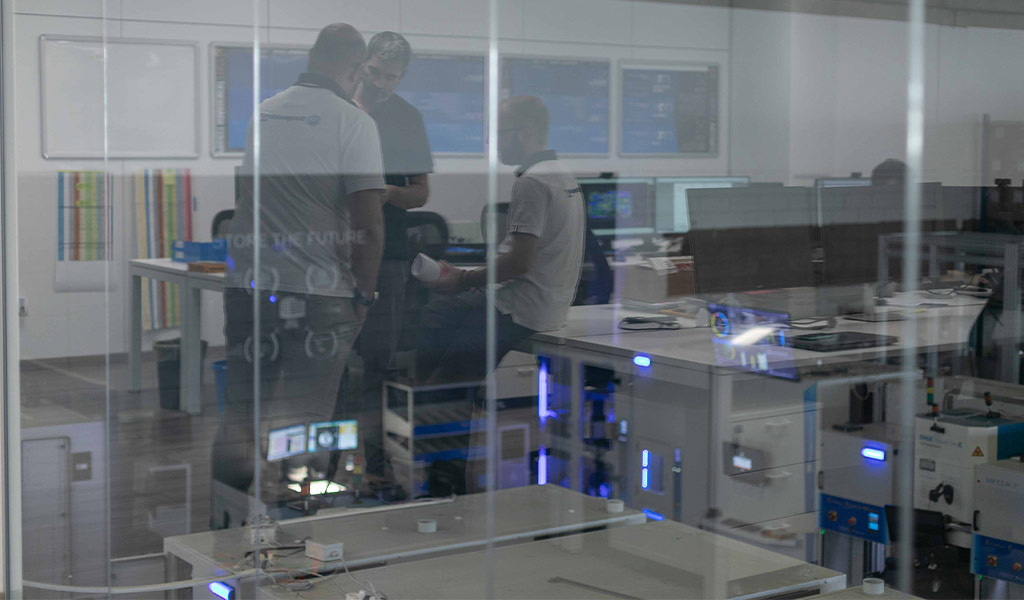
ESSEGI AUTOMATION has experienced these critical issues extensively in its previous life when it was on the other side of the barricade, producing electronic boards. This background has played and continues to play a key role in the development of intelligent storage systems capable of meeting the specific needs of this production sector.
Direct experience has indeed triggered the spark of innovation in the original core of passionate developers at ESSEGI AUTOMATION, multiplying efficiency and competitiveness for companies in global markets.
Cases: a patented unique system
The uniqueness of ESSEGI AUTOMATION systems lies mainly in the adoption of special antistatic and resistant cases that contain components inside the Ultraflex series warehouses. Unlike most intelligent storage systems that directly handle coils, the case system introduced by ESSEGI AUTOMATION ensures the integrity of components and maximum flexibility in managing materials of different sizes and shapes.
The cases can accommodate coils and components from 7” to 15” and can reach different heights thanks to a system of composable thicknesses that allows increasing the container’s depth from 8 to 88 mm. With the addition of the cover, this system has also allowed the creation of the ‘case box‘ for the storage and movement of THT materials of different sizes from coils. Thus, forming orderly stacks, the cases can be easily moved in kits by both operators and AMR systems in a full automation perspective.
Cases are a key factor in the intelligent storage logic governing ESSEGI AUTOMATION’s ISM systems. Thanks to these cases, the Ultraflex series cabinets can maximize space by filling every available slot inside the machine without compromising material sorting criteria and, therefore, its traceability. The warehouse can dynamically manage the division of internal spaces, just like a hard disk, and allow the fast and automatic storage of cases of different heights.
Material retrieval and loading operations are also significantly sped up using cases: Ultraflex series warehouses automatically move and stack up to 54 coils, taking 10 seconds of operator time to extract them. The material prepared by the machine only needs to be picked up, while for loading, it is sufficient to stack the cases in the elevator.
Maximum efficiency in minimal space, indeed. But intelligence certainly does not end here.
We have reinvented the storage tower
Modularity and an extremely wide range of combinations based on customer needs are also common features of the various configurations of ESSEGI AUTOMATION towers that can adapt to any production context, thanks to the availability of differentiated capacity modules of the Ultraflex Series ranging from 1800 to 3900 coils.
We are indeed talking about very compact storage systems that are born as standard to be assembled through a system of transport shuttles, communicating doors, internal elevators, and clamps for coil handling.
The flexibility of these systems, capable of multiplying storage capacity without limits even after a long time, is the basis of another aspect that distinguishes ESSEGI AUTOMATION warehouses: scalability over time. Each company, based on its specificities and development path, can implement configurations with other modules and new products for storage management. The Ultraflex series warehouses that are over 10 years old are still in full operation, perfectly communicating with new hardware models.
The power of Integration
It is easy to understand that the efficiency of ESSEGI AUTOMATION warehouses relies not only on advanced hardware systems but also, and above all, on equally advanced software logics capable of promoting continuous data exchange with all major management systems in the company, from ERP to MES, to Pick & place.
Thanks to continuous research and development based on its customers’ needs, ESSEGI AUTOMATION has developed a powerful system for managing and moving components inside the warehouse, as well as tracking materials throughout the production flow, from the registration phase on entry to exhaustion or eventual discard due to expiration or irregularities.
This development activity is called integration and consists of an extraordinary range of software functions capable of making electronic production companies true intelligent factories according to Industry 4.0 goals.
In ESSEGI AUTOMATION, the integration activity is carried out by a specialized team of Application Engineers dedicated to translating programming logics into the company’s needs after a careful phase of observation and analysis of data flows within the company and the actions to be taken to optimize processes.
It is in this initial consulting phase, which involves querying databases and mapping data, that ESSEGI AUTOMATION developers, together with the company, define the objectives of a project designed not only to intelligently manage the warehouse but, more importantly, to promote maximum continuity in material flow and increase productivity.
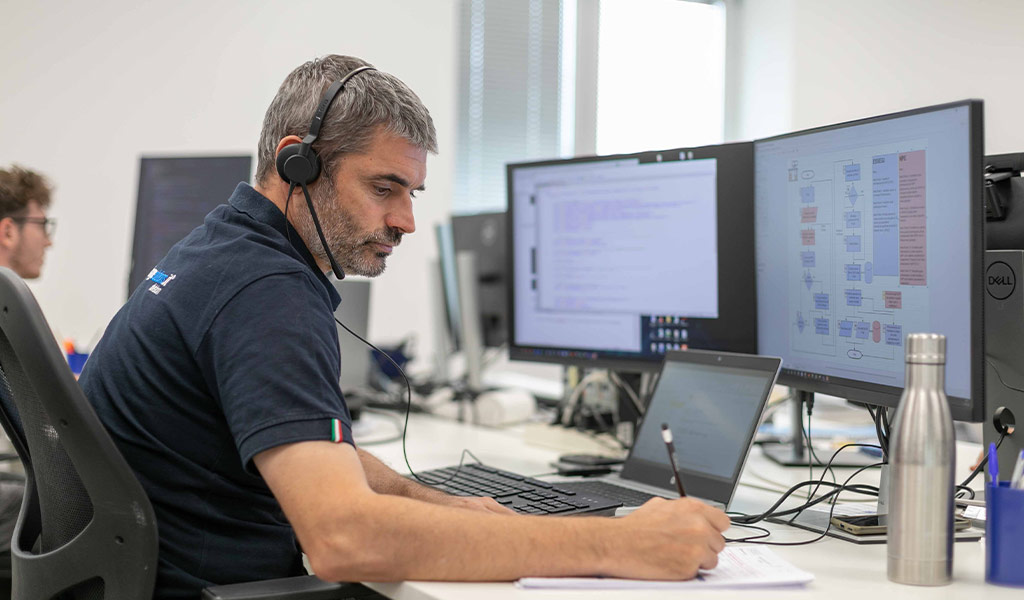
And thus, we return to the critical issues that cause inefficiency in the production process of electronic assembly companies. Human error and data misalignment between the warehouse and management systems, as well as the difficulty of quickly updating work orders and retrieving information on stocks, often lead to downtime in the production cycle. Hence the need to speak a common language for all management systems, including that of intelligent warehouses, or at least allow the software that governs automation in the company to easily understand each other.
This is the goal that the ESSEGI AUTOMATION software team works on through integration systems at various levels: from standard connections to web interfaces; from APIs to the development of dedicated software.
There are no limits to the integration capabilities of ESSEGI AUTOMATION specialists, capable of breaking down every barrier between the protocols of the software used in the company to ensure complete traceability of components and movement between the warehouse and the production area.
It should also be considered that with the adoption of the unique code, ESSEGI AUTOMATION ISM systems can control positions outside intelligent warehouses. They are therefore able to manage the movement of material in traditional warehouses with open shelving or vertical warehouses of any brand.
In conclusion, we can assert without seeming arrogant that if your warehouse is not smart, ESSEGI AUTOMATION takes care of it!
At APEX EXPO 2024 we are at
BOOTH#714
